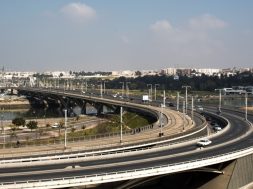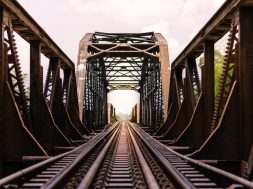How green is my valley?

The built environment is always on an expansionist mode, the best we can do is to ensure that these man made marvels are both green and sustainable.
Among the different factors which govern the existence of human beings, the influence and power of nature on us is paramount. For ages, hence, there has been a constant effort to be in sync with nature. Likewise, an antagonistic opinion which consistently fights nature has also come to life. The theatre of architecture and design denotes this dualism to good effect. The skyline of the cities are dotted with contemporary buildings, not all may be green or sustainable but the importance is being increasingly realized
Green or Sustainable
When it comes to eco conscious architecture and design there are two terms which keep coming up, green buildings and sustainability. It, therefore, becomes very important to understand if they are same or different. Nilesh Gandhi, Principal Architect, Metadesign Architects says “They are mere nomenclatures, depends on who is using it! A more inclusive word is sustainability, while a lay man or novice would identify as Green Buildings.! The underlying concept is the same, it all revolves around safeguarding the environment, and building more with less amount of natural resources.”
In terms of nomenclature green and sustainable may seem to be performing the same function but there is a difference. Says John Alok Decruz, Director – Projects, Morphogenesis. “A green building refers to a benchmark point rated development, through pre-defined rating systems i.e. LEED, GRIHA etc. It seeks to minimize the usage of resources like water and energy, whilst improving the indoor and outdoor air quality and increasing the use of recycled and renewable materials through pre-defined metrics. Sustainability, on the other hand, refers to a concept that goes beyond fulfilling benchmarks and rating criterias. It aims at reducing these benchmarks through passive design strategies along with integration of culture, art and craft that makes the building more local to its context.”
Akhil Ganatra, Managing Director, Clancy Global too draws a similar conclusion, he says “Green buildings and sustainability mean different things, Green Buildings is a checklist a project fulfils to get a rating and most likely a marketing leverage. Sustainability is an attitude and goes beyond design provisions; it’s about incrementally upgrading assets and making occupant conscious of reducing impact on the environment.
Green Urban Planning
In the long run, it won’t make a major difference if one in hundred buildings is eco conscious, towns and cities need to be designed in a proper way. The emphasis of being in sync with nature needs to be done at the planning and designing stage itself Tripat Girdhar, Principal Architect, The Design Studio explains “Green Urban Planning is a concept to ensure optimum utilization of energy, power, water conservation, and waste management. It helps in generating an impression that a city is not only well planned but is also well-structured. The city should be designed while emphasizing on the green building and sustainable mass transportation concepts as the center of design and architecture. According to the statistics, if all the premises are constructed to embrace green building norms, then India will portray a different picture and can save more than 8,400 MW of energy in a year. The goal of a green building design is to minimize the demand of non-renewable resources and maximize the efficiency of utilizing the renewable resources.”
Horizantal vs Vertical Expansion
Post-independence when the process of nation building started, a lot of our policies were pro-socialist and focus on housing was paramount. Most of the industries which were run by the state and central governments provided accommodation facilities for its employees. This era witnessed a lot of horizontal expansion. An effort was made to keep such buildings eco-friendly as also sustainable. It must be noted that these colonies or townships were prime example of gated communities much before the term was coined. Unlike a gated community though the housing units allotted were not on the basis of financial prowess but hierarchy in office.
However, today we live in an era of high-rises and one wonders if such marvels fall in the ambit of green buildings and sustainability. Akhil Ganatra points out “With regards to sustainability it’s a case of relevant offset i.e. if lifts are on renewable energy and if the embodied energy of building vertically is offset; horizontal expansion=vertical sky rises. Bringing visibility of usage data for energy, water, waste etc. to asset occupants plays a large role i.e. up to 60 per cent reduction in carbon footprint is achievable by increasing occupant consciousness and setting reduction benchmarks”. “Alignment or a ‘passive measure’”, says Nilesh Gandhi, ”is the key to define the sustainability quotient. While vertical expansion though expensive leaves us with much more ground space available, horizontal expansion being cost affective, is not possible in metros or urban context. It is a complete factor of available space and the context in which the building is built.”
Health and wellness in green buildings
In the initial stages green buildings as also sustainable buildings were akin to a trend with an expiry date, much like fashion trends. Thankfully the outlook has now changed people have gradually started realizing their value. “Green buildings aim at high standards of thermal and visual comfort parameters that have a direct impact on the health and wellness of users within the building,” says John, “Day lighting plays a key role in this aspect; naturally daylight spaces not only help in an overall reduction in energy consumption of the building but also allow for UV ingress that helps in disinfecting the indoor environment.”
Digitization of green building construction
The lockdown in response to the pandemic has catalyzed the process of digitization and even the green and sustainable buildings are gradually endorsing a digitized workflow. Paul Wallett, Regional Director, Trimble Solutions India and Middle East points out “The Covid-19 pandemic actually coincides with the rise of Industry 4.0 phenomenon, which is all about digitalization and automation of industrial workflows for unlocking the next wave of productivity. Together, these two forces underline the necessity to accelerate digitalization of the entire construction lifecycle for a sustainable built environment.
The ongoing pandemic and the resultant slowdown in construction work has brought a rare opportunity for the Indian construction industry to take concrete steps towards digitalization of their workflows. We expect several large Indian construction companies to lead the way in adopting digitalization, which will in turn allow them to create green and sustainable buildings going forward. Over a period of time, full digitalization is expected to permeate the vast majority of industry. As the mid-sized and even smaller construction companies start embracing it, their projects will increasingly benefit from sustainable practices and will give rise to a prevalence of green buildings in India. Technology is available aplenty, what is needed is a shift in mindset and pro-activeness to enable the change.”
Cookie Consent
We use cookies to personalize your experience. By continuing to visit this website you agree to our Terms & Conditions, Privacy Policy and Cookie Policy.









